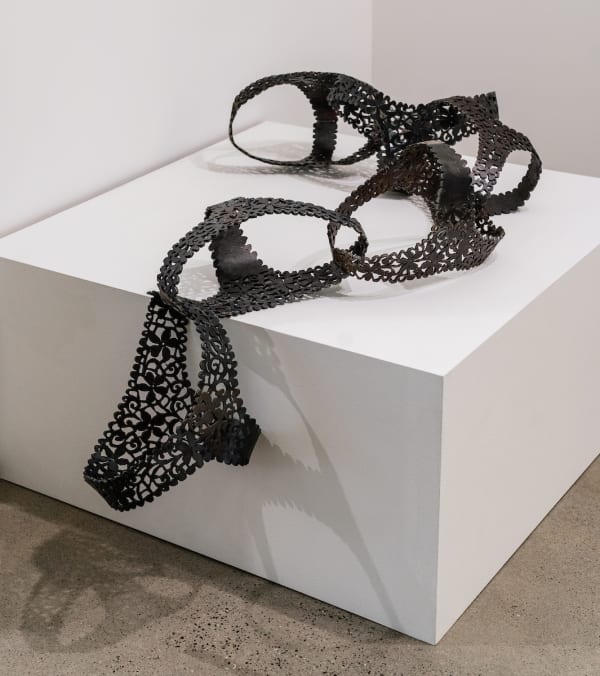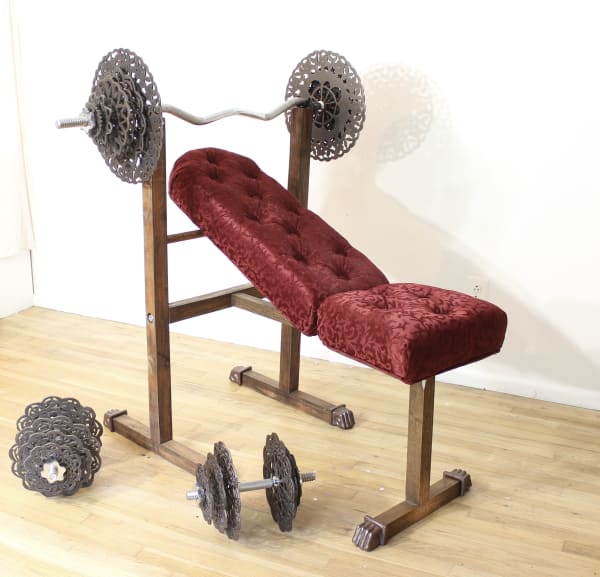-

-
 Cal Lane, Panties (white, pink, red), 2024, plasma cut steel
Cal Lane, Panties (white, pink, red), 2024, plasma cut steel -
Lane’s practice is informed by a continuing reach into crafts and patterns that are historically associated with femininity and domesticity, played out in materials that bear the weight of masculine cultural signifiers. Using humor and irony, she blurs the distinctions between these gender binaries, inviting us to embrace a more nuanced constellation of identities and meanings associated with familiar objects.
A look at: Cal Lane
Past viewing_room




